Have you ever stretched slime between your fingers and wondered, What makes it so gooey and stretchy? Or maybe you’ve noticed how a plastic bottle feels strong yet light. Believe it or not, slime and plastics have something in common—they’re both made from polymers.
Polymers might sound like a big science word, but they’re actually all around you. The word simply means “many parts.” Think of them like long chains made of repeating links, just like a necklace made of beads. Some of these chains are natural, like the ones in rubber or proteins in your body. Others are man-made, like the plastics we use every day.
In this article, we’re going to dive into the fun world of polymers. We’ll make slime, step by step, and then use that to understand how plastics work. Along the way, you’ll see how something as silly as slime can actually teach deep science—and why learning about polymers matters for our world today.
What Exactly Are Polymers?
The word polymer might sound like it belongs in a complicated science lab, but it’s actually very simple.
- “Poly” means many.
- “Mer” means part or unit.
So a polymer is just something made of many repeating parts linked together in a chain.
Imagine a necklace. Each bead on the necklace is a small piece, called a monomer. When you join lots of beads together, you get a long chain—a polymer.
Now, here’s the cool part: the same simple monomer can make very different things, depending on how you connect them and what chain you build.
Natural Polymers – Already Inside You
Polymers are not just in slime or plastics. They’re already part of life itself.
- Proteins in your muscles and hair are polymers made of smaller building blocks called amino acids.
- DNA, the code of life, is a polymer too. It’s a super long chain carrying information about who you are.
- Rubber from trees is another natural polymer—it stretches because of how its chains are arranged.
So before humans even invented plastics, nature was already a master polymer maker.
Man-Made Polymers – Plastics and More
When people learned how to make their own polymers, they changed the world. We call these synthetic polymers.
Think about your day:
- The plastic bottle you drink from.
- The stretchy elastic in your clothes.
- The rubber tires on cars.
- Even chewing gum!
All of these are made from man-made polymers. They’re light, flexible, and strong, which is why humans use them everywhere.
But here’s where slime comes in: slime is a fun way to actually see and feel a polymer in your own hands. When you make slime, you’re making chains of molecules link together, creating that stretchy, gooey texture.
Why Chains Matter
Polymers are all about chains. Some chains are loose and can slide around—these make materials soft and flexible, like slime or rubber bands. Some chains are tightly packed and cross-linked, which makes materials hard and stiff, like plastic rulers or Lego bricks.
The difference between soft and hard materials comes down to how those polymer chains are connected. This is the secret to why plastics can be so different—some are bendy, some are tough, and some are see-through.
So now we know: polymers are long chains made of repeating parts. They can be natural (like proteins and DNA) or man-made (like plastics). Next, let’s do something fun—make slime—and use it to see polymers in action.
Making Slime – Polymers in Your Hands

Slime looks like magic, but it’s really science you can touch. When you make slime, you’re actually creating a polymer network—a web of chains that stick together but can still move around. Let’s break it down step by step.
What You Need
- White school glue (like PVA glue)
- Borax solution (or liquid starch, or contact lens solution with baking soda—all of these work as activators)
- A mixing bowl and spoon
- Food coloring (optional, but fun)
Steps to Make Slime
- Pour glue into the bowl.
Glue itself is already made of polymer chains. They’re floating around in water, which is why glue is liquid. - Add food coloring (optional).
This doesn’t change the science, but it makes your slime look more exciting. - Add your activator (borax solution or starch).
Here’s where the magic—actually chemistry—happens. - Stir slowly until it thickens.
At first, it feels sticky and runny. But as you keep stirring, it becomes stretchy, rubbery, and less messy. - Knead with your hands.
The more you knead, the smoother your slime becomes.
The Science Behind the Slime
Glue is made of polyvinyl acetate (PVA)—a long chain polymer. On its own, these chains slide past each other easily, so glue is sticky and runny.
When you add borax solution (or another activator), something special happens:
- Borax links the glue chains together.
- These “cross-links” turn the liquid into a stretchy, semi-solid material.
Think of it like spaghetti: plain cooked noodles (glue) slide around. But if you tie them together with strings (borax), they tangle into a net (slime).
Why Slime Feels So Weird
Slime is neither a solid nor a liquid—it’s something in between. Scientists call it a non-Newtonian fluid, but don’t worry about the big word. It just means slime can act like a solid when you pull it fast, and like a liquid when you let it flow slowly.
Try it yourself:
- Pull slime quickly, and it snaps.
- Stretch it slowly, and it oozes smoothly.
This strange behavior comes from the polymer chains sliding and tugging at each other inside.
What Kids Learn From Slime
- Hands-on science – Kids don’t just hear “polymers exist.” They feel them stretching and snapping.
- Cause and effect – Adding borax changes liquid glue into something completely new.
- Problem-solving – If slime is too sticky, add more activator. If it’s too stiff, add more glue. Kids learn to tweak and adjust, just like scientists.
- Curiosity and creativity – Kids can make glow-in-the-dark slime, fluffy slime with shaving cream, or glitter slime. Each version is a mini experiment.
So slime is not just a toy. It’s a fun, safe, and powerful way to explore the world of polymers. And once you understand slime, you’re ready to understand plastics—because they’re built on the same science, just made stronger and more permanent.
Plastics – Everyday Polymers
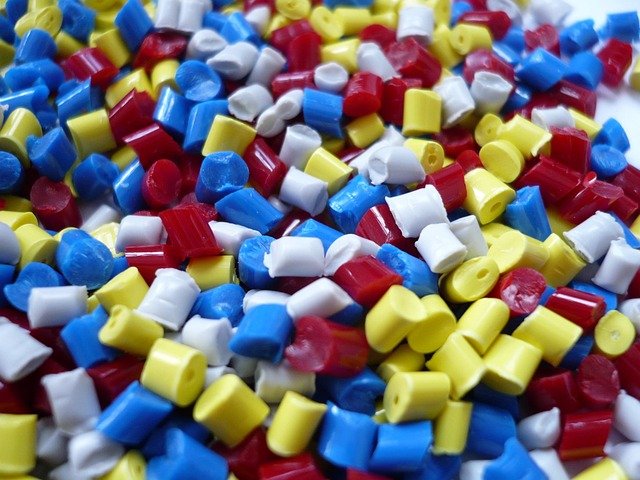
Slime is fun, but plastics are the real-world version of polymers that shape our daily lives. Just look around: your pen, your chair, your phone case, your bottle—they’re all plastics. But what exactly are plastics, and why are they everywhere?
What Are Plastics?
Plastics are man-made polymers. Just like slime, they’re built from chains of repeating parts (monomers). But unlike slime, these chains are designed to be strong, tough, and long-lasting.
For example:
- Polyethylene is the plastic in shopping bags and bottles.
- Polystyrene is used in foam cups and packaging.
- Polyvinyl chloride (PVC) makes pipes and flooring.
- Nylon is used in ropes and clothing.
Each plastic comes from the same idea: tiny repeating building blocks linked into long chains. The way these chains are arranged makes the plastic bendy, stiff, clear, or tough.
How Are Plastics Made?
Most plastics start from oil or natural gas. Scientists break these fuels into small molecules (monomers), then link them together in giant factories. This process is called polymerization.
Think of it like this: factories are giant “necklace-making machines,” snapping beads together over and over until they create miles of chains. These chains are then melted, shaped, or spun into useful products.
Why Plastics Are So Useful
Plastics became popular because they are:
- Lightweight: A plastic bottle is much lighter than a glass one.
- Strong: Many plastics can take heavy use without breaking.
- Flexible: They can bend into shapes that metals or glass can’t.
- Cheap: They cost far less to make than natural materials like wood or glass.
- Resistant: Plastics don’t rust or rot the way metals and wood do.
That’s why plastics are in everything—from medical devices to sports gear to food packaging. They make life easier and safer in many ways.
Plastics vs. Slime
Slime helps us see how polymer chains behave—stretching, tangling, and sliding. Plastics use the same principles but in a more controlled way. Instead of being soft and gooey, their chains are tightly linked and sometimes cross-linked, making them tough and stable.
Think of slime as the “baby version” of plastics. Both are built on chains, but one is playful and temporary, while the other is strong and lasting.
The Problem With Plastics
But here’s the twist: the very thing that makes plastics useful—their strength and resistance—also makes them a problem. Unlike slime, plastics don’t break down easily. A plastic bottle can last hundreds of years in the environment.
This has created a huge challenge for our planet: plastic waste piling up in oceans, rivers, and landfills. Animals sometimes eat it by mistake, and tiny plastic pieces (microplastics) have been found even in the water we drink.
So while plastics are amazing inventions, they also remind us of the importance of balance. Science gave us powerful materials, but now science—and people like you—must find smarter ways to use and recycle them.
So far, we’ve gone from slime to plastics, seeing how polymers shape both fun experiments and everyday life. Next, let’s explore different kinds of plastics—why some are soft, some are hard, and why recycling them is tricky.
Types of Plastics – Not All Are the Same
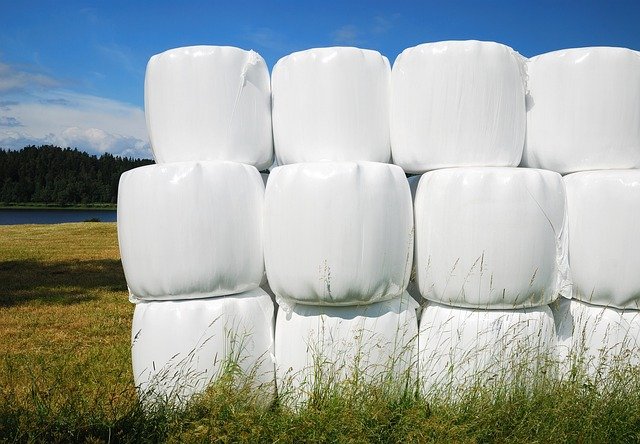
When most people say “plastic,” they think it’s just one material. But plastics come in many forms. The secret is in how the polymer chains are built and arranged.
Thermoplastics – The Flexible Ones
Thermoplastics are plastics that soften when heated and can be reshaped again and again. Their chains are like spaghetti noodles: they slide past each other when hot, but stiffen when cool.
Examples:
- Polyethylene (PE): found in shopping bags, bottles, and toys.
- Polypropylene (PP): used in lunch boxes, ropes, and car parts.
- Polystyrene (PS): used in disposable cups and foam packaging.
Why they’re useful: easy to mold, cheap, and recyclable (in theory).
Thermosetting Plastics – The Hard Ones
Thermosetting plastics, once shaped, stay that way forever. Their chains are cross-linked into a strong net, so they don’t melt when reheated.
Examples:
- Bakelite: used in old radios and switches.
- Epoxy resins: used as strong adhesives and coatings.
- Melamine: used in kitchenware.
Why they’re useful: heat-resistant, tough, and durable. But they can’t be recycled easily because you can’t melt them down again.
Bioplastics – Plastics of the Future
Scientists are now making bioplastics from plants like corn or sugarcane. These plastics behave like normal ones but can sometimes break down more easily. The hope is that bioplastics will reduce waste and pollution.
Why Plastics Behave Differently
The key is in the chains and links:
- Loose chains → soft and bendy plastics (like plastic wrap).
- Tightly packed chains → hard and stiff plastics (like Lego bricks).
- Cross-linked chains → tough and heat-resistant plastics (like kitchen melamine).
This is the same principle we saw in slime. Change the way the chains connect, and you change the whole material.
Recycling Plastics – The Challenge
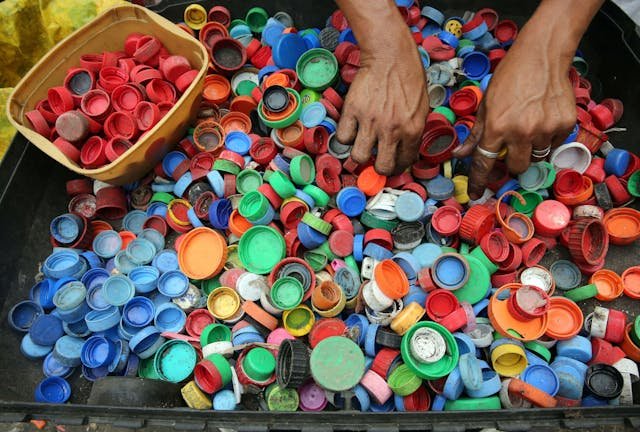
You might think recycling plastic is easy—just melt it down and make something new. But the truth is more complicated.
Why Recycling Is Hard
- Different plastics don’t mix. Imagine trying to melt chocolate and cheese together. They don’t blend well. The same happens when you try to mix polyethylene with polypropylene.
- Additives. Many plastics have dyes, fillers, or chemicals added to give them color, strength, or flexibility. These extras make recycling trickier.
- Thermosetting plastics don’t melt. Once hardened, they can’t be reshaped, so they can’t be recycled in the usual way.
The Numbers on Plastics
Have you ever noticed the little recycling triangle with a number on plastic items? That number tells you what kind of plastic it is. Some are easy to recycle (like PET bottles), while others are rarely recycled because it’s too costly.
Smarter Recycling Solutions
Scientists and engineers are working on new ways to handle plastic waste:
- Chemical recycling: breaking plastics back into their original building blocks (monomers), then reusing them.
- Biodegradable plastics: designing plastics that break down in nature more quickly.
- Upcycling: turning old plastics into something more valuable, like building materials.
The future of plastics will depend on how well we can manage their afterlife.
So now we’ve learned that not all plastics are the same—some can be recycled, some cannot, and new types are being developed to protect the planet. Next, let’s explore the double side of plastics: why they’re both a blessing and a curse for our world.
Plastics – A Blessing and a Curse
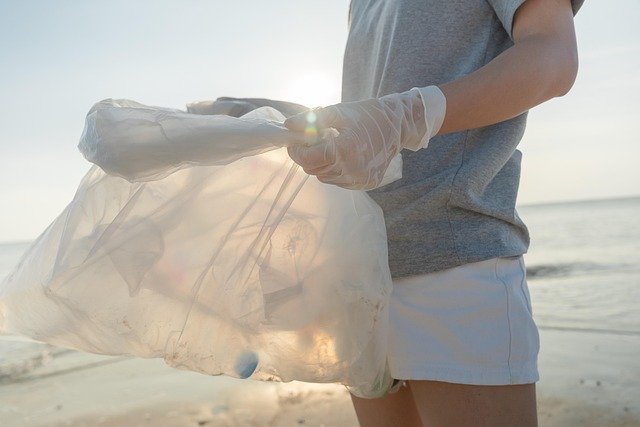
Plastics are everywhere for a reason. They solved many problems humans once had. But they also created new problems we are still struggling to fix.
The Good Side of Plastics
- Lightweight and Strong
Before plastics, glass and metal were used for most containers. Imagine carrying milk in a glass bottle every day—it’s heavy and can break easily. A plastic bottle is light, safe, and cheap. - Medical Uses
Plastics save lives. Syringes, gloves, IV tubes, and even artificial joints are made from polymers. These materials are clean, safe, and can be thrown away to prevent infection. - Safety and Convenience
Seatbelts, helmets, and child car seats use strong plastics to protect us. Plastic packaging keeps food fresh longer, which reduces waste. - Innovation Everywhere
From airplanes to sports gear to computers, plastics make technology possible. Without them, many modern inventions would be too heavy, too expensive, or simply impossible.
The Bad Side of Plastics
- Plastic Waste
The same durability that makes plastics useful also makes them a problem. They don’t rot like wood or rust like iron. A plastic bag might last hundreds of years in the environment. - Ocean Pollution
Millions of tons of plastic end up in the ocean every year. Sea turtles mistake plastic bags for jellyfish. Birds swallow bottle caps. Even tiny plankton are eating microplastics. - Health Concerns
As plastics break into smaller pieces, they become microplastics—so small we can’t see them. Scientists have found microplastics in drinking water, sea salt, and even human blood. We don’t yet know all the effects, but it’s worrying. - Hard to Recycle
As we learned, plastics are not easy to recycle. Many end up in landfills or are burned, which pollutes the air.
The Balance We Need
Plastics are not “bad” or “good.” They are tools. The problem is how we use them. If we keep treating plastics as “throwaway materials,” the Earth will pay the price. But if we use them wisely, recycle better, and invent smarter materials, plastics can remain a helpful part of life.
What Kids Can Do About Plastics
You might wonder, What can I do? I’m just one person. But small actions add up—especially when millions of kids join in. Here are simple, doable things:
- Use less single-use plastic. Carry a reusable water bottle instead of buying new ones.
- Choose reusables. Bring your own shopping bag instead of using plastic bags.
- Recycle properly. Learn what plastics are accepted in your local recycling program.
- Be creative. Turn old bottles or containers into fun projects, planters, or storage boxes.
- Spread awareness. Talk with friends and family about reducing plastic waste.
Every small choice is like a vote for the kind of world you want.
So now we see both sides of plastics. They protect us, feed us, and connect us—but they can also harm animals, pollute oceans, and stay around for centuries. The future depends on how we balance use and care.
How Debsie Helps Kids Learn Through Science Like This
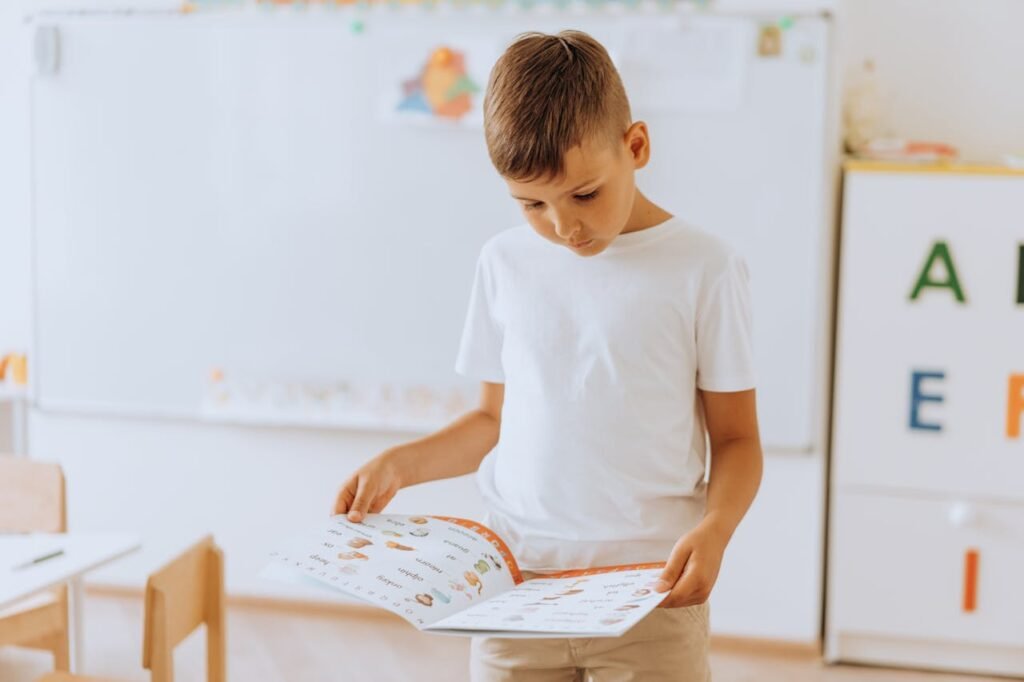
At Debsie, we believe that learning should never feel like memorizing from a dry textbook. It should feel alive—like stretching slime between your fingers or noticing how a plastic bottle feels light but strong. When kids connect science to real life, they don’t just remember facts—they understand and enjoy them.
Hands-On Learning
When a child makes slime in a Debsie science class, they’re not just playing. They’re learning about polymers, cross-links, and how materials change. They see chemistry with their own eyes and feel it in their hands. This makes science real instead of abstract.
Building Problem-Solving Skills
Slime doesn’t always come out perfect. Sometimes it’s too sticky, sometimes too stiff. Instead of feeling frustrated, Debsie teachers guide kids to ask:
- What happens if I add more glue?
- What happens if I add more activator?
This trial-and-error builds problem-solving muscles. The same skills apply later in math, coding, and even life decisions.
Connecting Science to the Bigger Picture
After making slime, Debsie teachers connect the dots: “This is a polymer. Do you know what else is made of polymers? Plastics, rubber, even DNA in your body!” Suddenly, kids see that what they just did links to the world around them. That spark of connection turns into curiosity, and curiosity is the root of true learning.
Life Skills Beyond Science
Working with slime or learning about plastics also teaches kids:
- Patience – because experiments take time.
- Focus – because details matter in science.
- Confidence – because when they succeed, they see, I can do science too!
- Responsibility – because learning about plastic waste shows them how their choices impact the planet.
These are the same life skills that help children succeed in all areas of learning and in their future.
The Debsie Difference
Debsie isn’t just about teaching science facts. It’s about nurturing thinkers, explorers, and doers. With expert teachers across all subjects—from chemistry to physics, math to history—we make sure kids grow smarter, but also more curious, creative, and confident.
Just like slime teaches the science of polymers in a fun way, every Debsie class uses simple experiments, engaging lessons, and real-world examples to make learning stick.
Conclusion – Slime, Plastics, and the Power of Learning
Slime may look like just a fun toy, and plastics may feel like just another everyday material—but now you know the truth: they are both built on the same science of polymers. Long chains of repeating parts give us stretchy slime, bendy bottles, tough ropes, and even the DNA inside our bodies.
By making slime, kids see chemistry come alive. By learning about plastics, they understand how science shapes their world—and why smart choices matter for the future of our planet. The lesson is simple: science is not far away in a textbook. It’s right there in their hands.
At Debsie, we believe every child deserves to feel that excitement. That’s why our teachers don’t just “teach facts.” They guide kids to experiment, question, and discover for themselves. Along the way, they build patience, curiosity, problem-solving, and confidence—the real skills that last a lifetime.
So the next time your child stretches slime or notices the plastic in a bottle, remember: that’s not just play. That’s science. That’s learning. That’s growth.
👉 Ready to spark your child’s curiosity? Book a free trial class with Debsie today, and watch them stretch their imagination—just like polymers stretch into slime.
Read Next:
